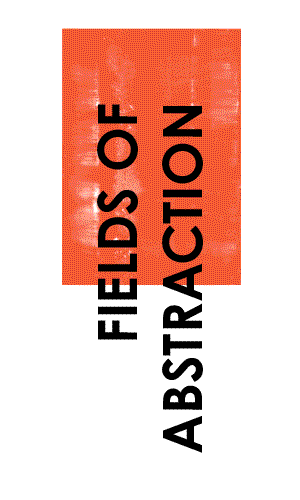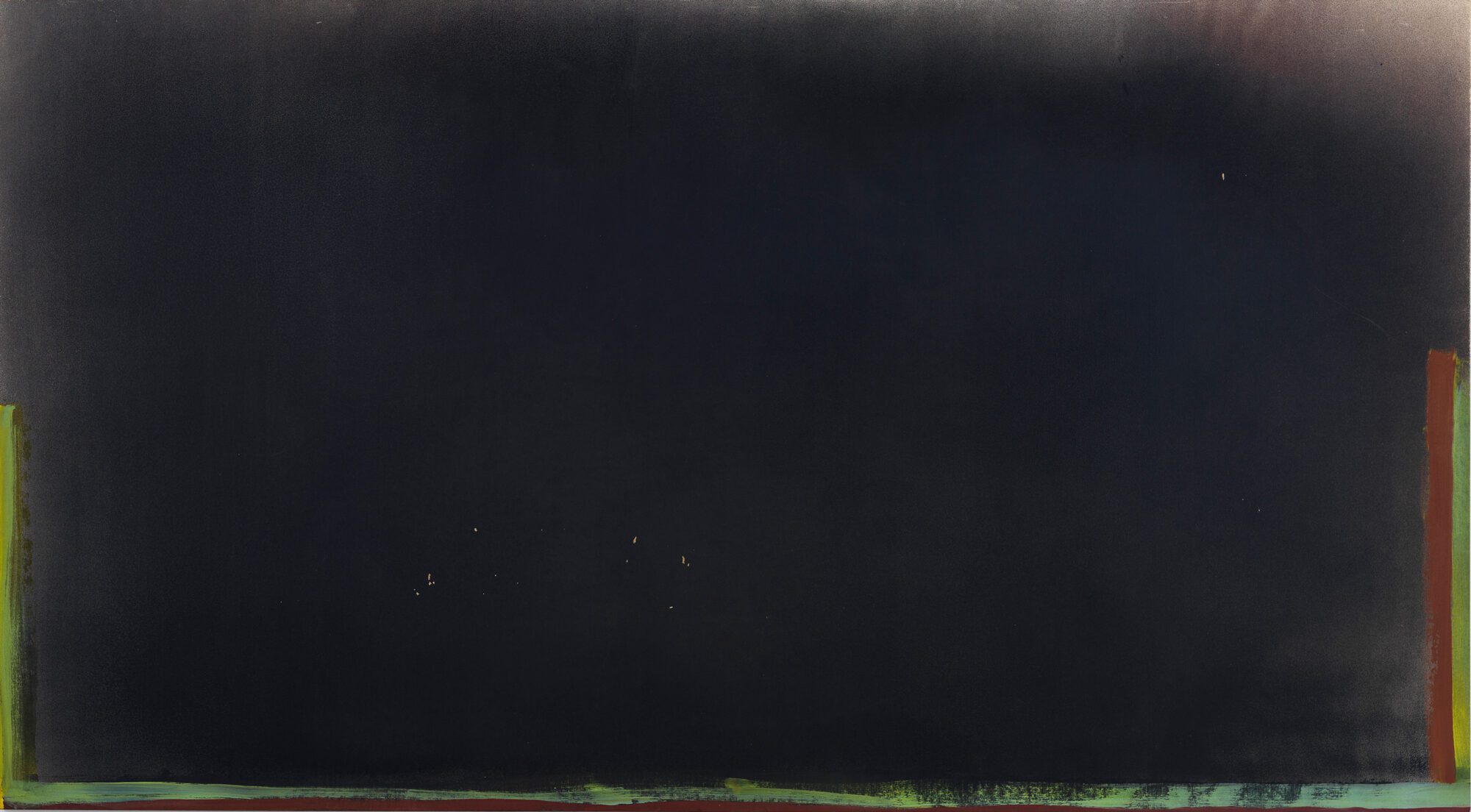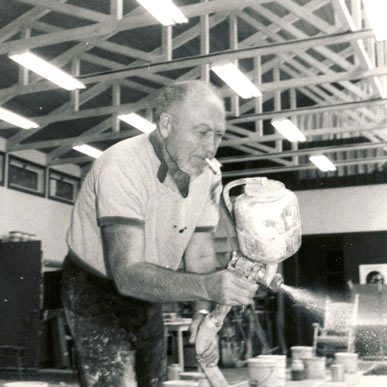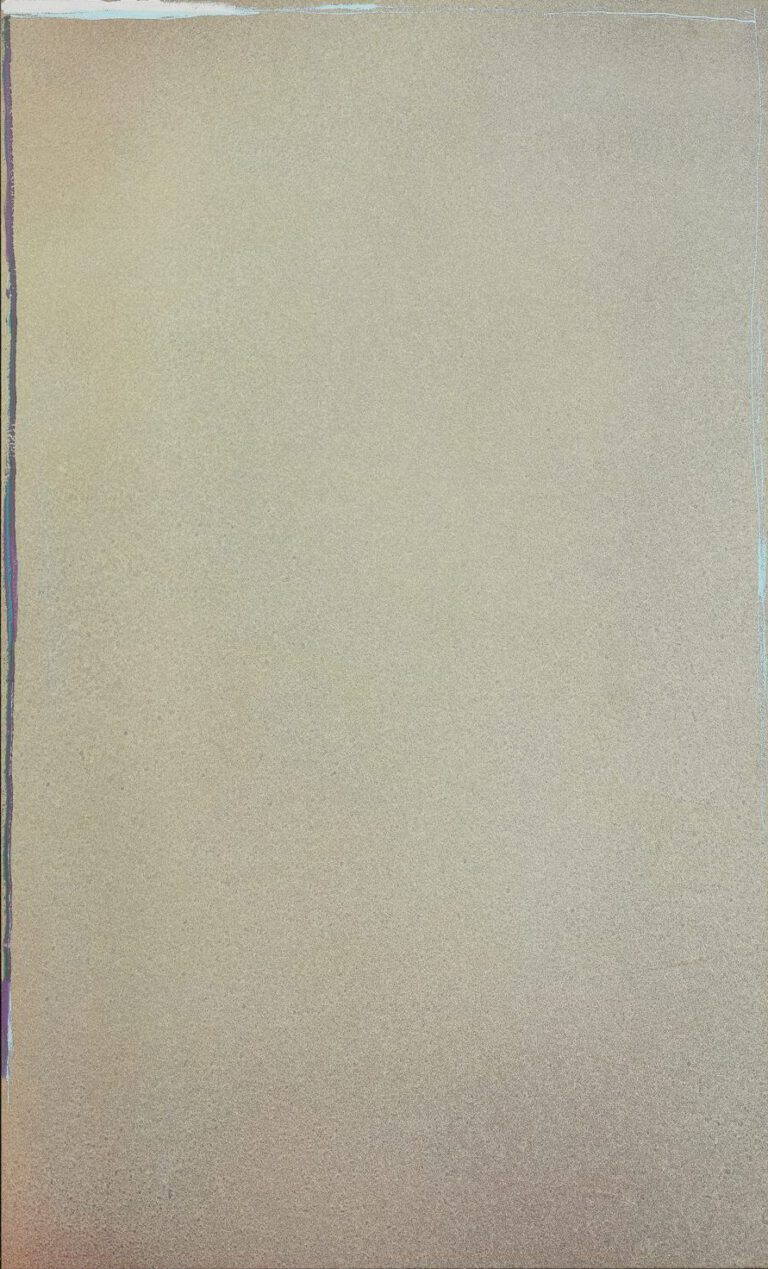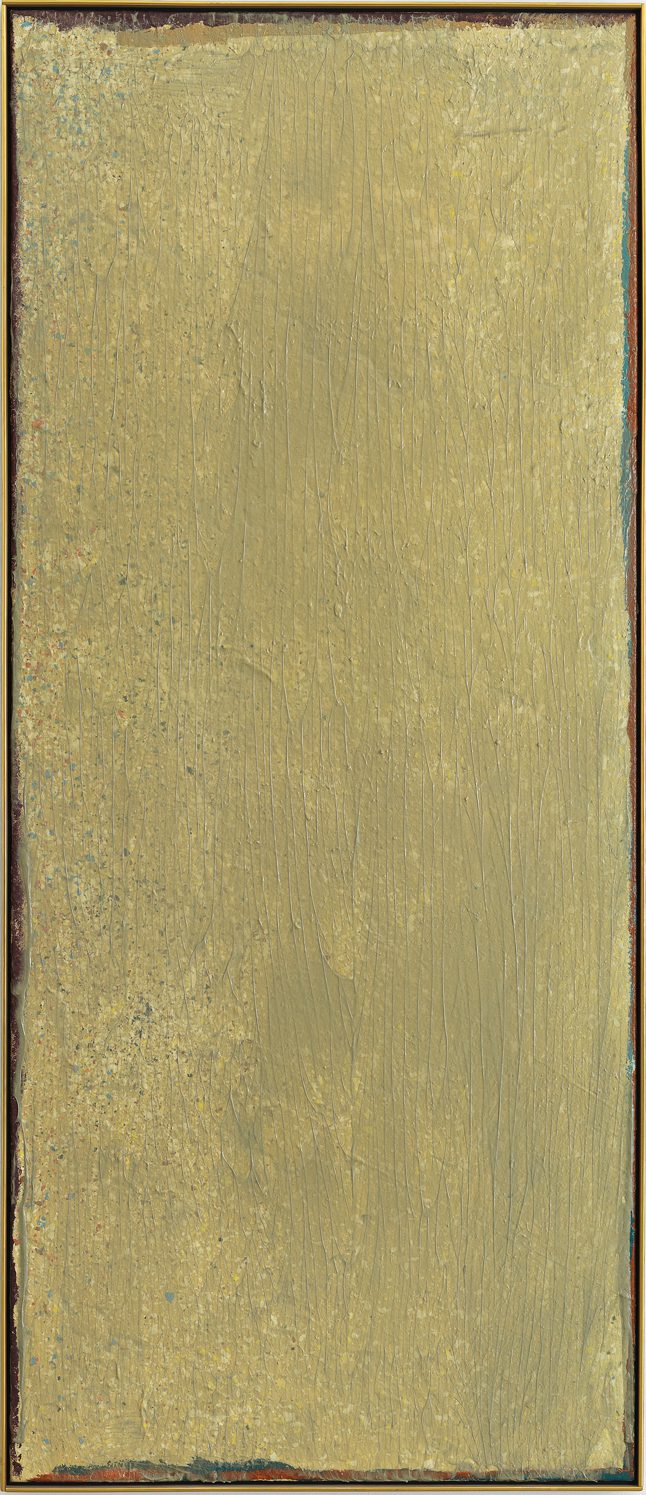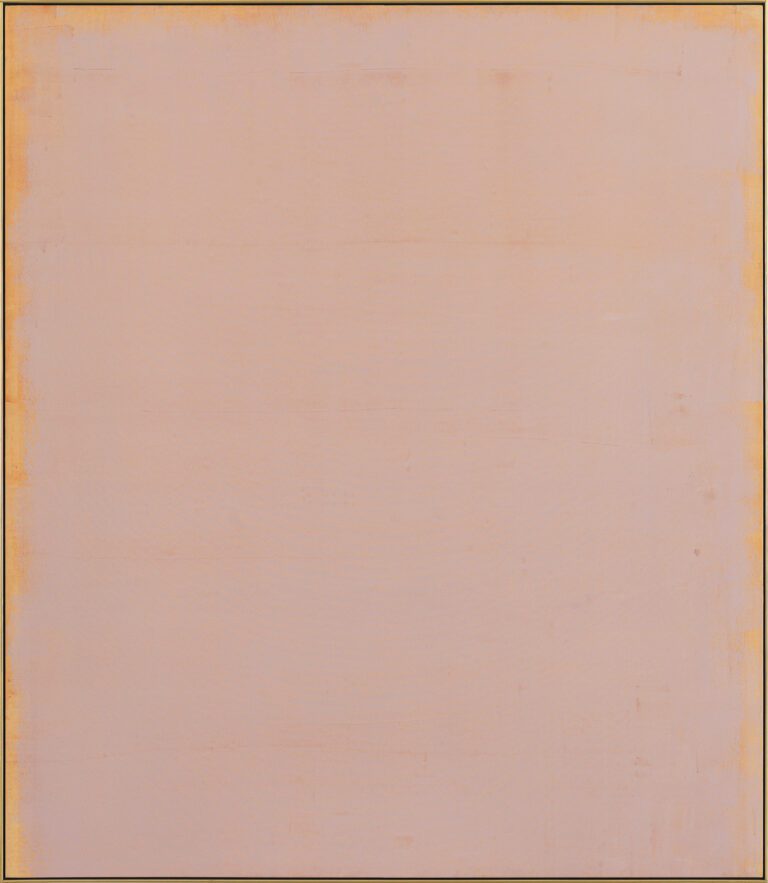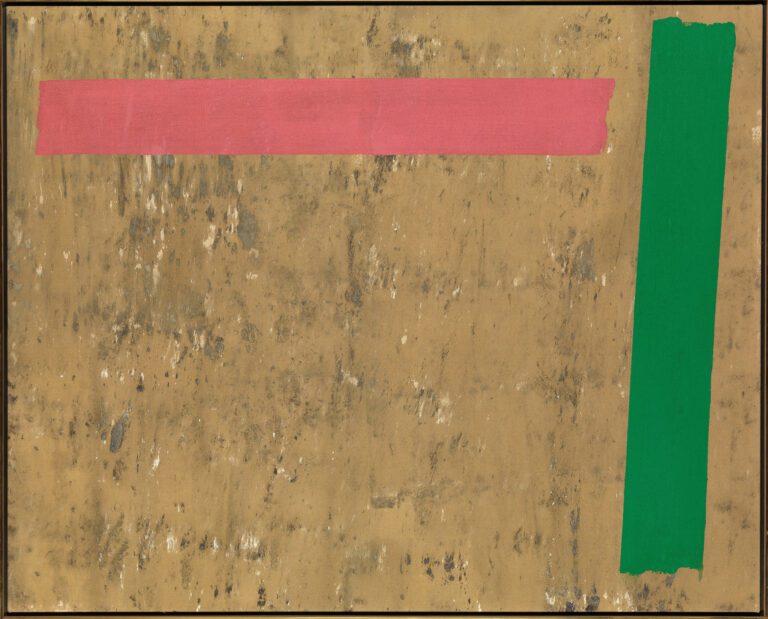Born in Russia in 1922, American painter Jules Olitski contributed centrally to the development of Color Field painting in the mid-1960s. He represented the United States in the 1966 Venice Biennale and was given the first solo exhibition for a living American artist at the Metropolitan Museum of Art in 1969.
Olitski focused on the material qualities of surface and edge, color and line. In 1960, he began to pour and stain dye onto enormous rolls of raw canvas unfurled across the studio floor. He experimented with different methods of applying paint, using brushes, sponges, mops, and rollers. In 1964 he said to sculptor Anthony Caro: “What I would like in my painting is simply a spray of color that hangs like a cloud, but does not lose its shape.” Caro, who was painting his sculptures with a spray gun, suggested that Olitski try this technique – also used by car customizers – and as a result Olitski developed his method of spraying paint with an industrial spray gun onto unprimed canvas. This technique allowed him to paint large surfaces rapidly, creating the sought-after effects of hazy color suspended midair. In his statement for the 1966 Venice Biennale, Olitski wrote: “When the conception of internal form is governed by edge, color . . . appears to remain on or above the surface. I think, on the contrary, of color as being seen in and throughout, not solely on, the surface.”
Working initially with three spray guns simultaneously to create different densities of color, Olitski later used a single spray gun with a variety of nozzles for more control. The spray gun, containing emulsion paint thickened with an acrylic gel for greater viscosity, produced a mosaic-like effect on the unprimed surface. He laid and tacked the canvas to the floor before applying the paint to the entire surface, subsequently dividing it into a series of separate paintings. From 1966, Olitski placed greater emphasis on the framing edge. For closure, he created linear borders along the bottom and side edges with brushstrokes of gel-thickened paint applied beneath and on top of the sprayed coat. Colored lines, harmonizing with the sprayed colors, define the edge of what otherwise appears as a film of delicate, tonally related colors. Each work was attached to a stretcher after completion of the painting.
Adina Kamien
